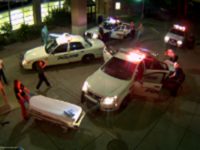They are coming back. What, in the old days, were trolley cars in urban areas are now light rail systems serving metro areas while complementing buses, trains and other transit services.
And security is keeping up through intelligent, integrated application of video.
One example: The Metro Transit Police Department, part of Metro Transit in Minneapolis/St. Paul, is extending its investment in technology, standardizing key parts of its transportation technology platform with video management software (Verint) for its Central Corridor Light Rail Transit project. Moving from its legacy security and business systems to a unified approach, the VMS solution is helping the organization’s Metro Transit Police force advance its ability to monitor and secure the Twin Cities’ current and new light rail and commuter trains and passengers, as well as enhance investigation capabilities and increase response times, according to Brian Weaver, senior asset protection specialist with the Minneapolis Metro Transit Police Department
Convenience, security and safety are all key parts of the service delivery for our organization, adds John Siqvelend, the department’s public relations manager. “We have patrols for visibility but also technology capabilities” to protect the critical transit infrastructure.
“We are one of the largest security video systems with about 5,500 cameras. In 2009, we had an analog cutover, moving to networked IP cameras while consolidating on a single platform for standardization benefits. There is license plate recognition in parking lots. And we boast about three petabytes of video storage. There are 900 buses and 67 light rail cars with five to 12 cameras per vehicle and DVRs,” says Weaver, who adds that a vehicle area network is under construction. GPS for vehicle location is integrated with police dispatch.
There also is IP-based access controls to protect sensitive platform areas and communications cabinets.
The agency covers seven metro counties plus coverage in some adjacent counties. “We have a formal memo of understanding with local police, too,” comments Siqvelend
There also is collaboration with the U.S. Marshals and the Transportation Security Administration (TSA). Transit Police also work as part of a Visible Intermodal Prevention and Response team, a Transportation Security Administration program. VIPR teams cover travelers at railroad stations, bus stations, ferries, car tunnels, ports, subways, truck weigh stations, rest areas, and special events. They also can deploy to deal with chemical, biological, radioactive, nuclear and explosive weapons of mass destruction threats.
The focus is on risk mitigation. “And we make security obvious” to comfort passengers and staff, says Weaver.


